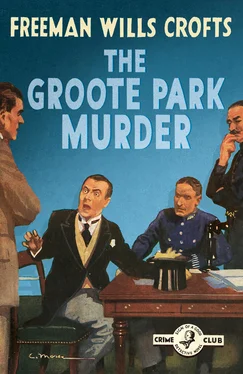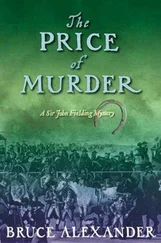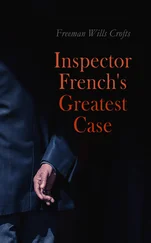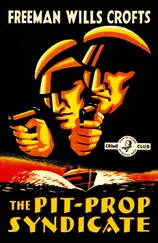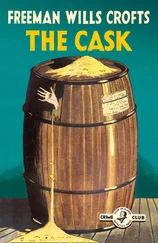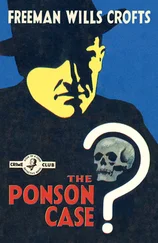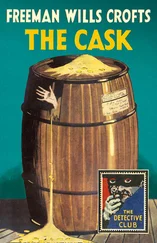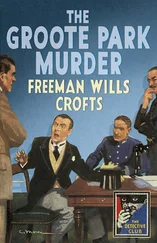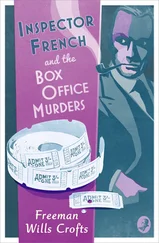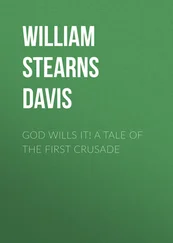We continue working in this way ’til we have completed a second synopsis of the case, this time describing the gradual revealing of the details to the detective. As we do so, we find that we have to supply a good deal of fresh material. That means of course a new set of questions to be answered. There is, for instance, the very important problem of how the detective discovers the truth. He could if possible do so through some flaw inherent in the criminal’s plans, unperceived ’til now by the reader. If, however, this can’t be arranged, the necessary clues must be planted for the detective to find.
This second synopsis which, let us suppose, we have now completed, gives us the sequence of events right from the discovery of the crime up to the arrest and conviction of the criminal. It is, in other words, a précis of our book. We probably have to make another chronology giving the movements of the detective, as well possibly as more sketch maps. Then, having estimated the length of our various scenes and satisfied ourselves that our book is going to run to the required 80,000 words, we can proceed to our next stage.
The fourth stage is the actual writing, and there is nothing to be said about it except that we take the advice of the King in Alice in Wonderland and begin at the beginning, go on ’til we come to the end, and then stop.
When writing we invent the minor episodes. For instance, our synopsis may read: ‘Detective finds paper in X’s room.’ We have now to think out how the detective obtains access to X’s room, whereabouts the paper is hidden, and how the detective comes to look in that place.
The writing of the passages which give the necessary clues to the reader requires a lot of thought. All the clues must be given which he needs to enable him, by the use of his intelligence, to reach the truth. At the same time they must not be easy to pick up.
There are many tricks for concealing clues. The chief is perhaps to invert the sequence of events or to alter their connection. Suppose we want to tell the reader that the murderer is a good shot. If his skill be mentioned in connection with the shooting of the victim, the story is given away. But if it be brought out in relation to a shooting competition in another part of the book, the reader will probably miss its significance.
Let us now pause for a moment to consider our climax. In this we shall try to clear up as suddenly as possible what has been up to now a complete mystery. If on reaching the climax the reader says: ‘Of course! Why didn’t I think of that?’ we shall have done our job well.
Well, we go over our manuscript, checking and cutting and patching and re-writing. Then having typed a fair copy, we try it on the dog: we get as many of our friends to read it as we can. We incorporate the more useful of their suggestions, and at last our book goes off, carefully registered, and with a magic name on the cover. Whereupon we settle down to wait.
FREEMAN WILLS CROFTS
1937
PART I
CHAPTER I
THE DARTIE ROAD TUNNEL
JOSEPH ASHE, signalman in the employment of the Union of South Africa Government Railways, stood in his box at the west end of Middeldorp station, gazing meditatively down the yard to the platforms beyond.
It was his week on night duty, which he took in rotation with two other men. Not by any stretch of the imagination could the night shift in this particular box be called sweated labour. For the best part of an hour—indeed, since he had wearied reading and re-reading yesterday’s Middeldorp Record —Ashe had paced his cabin, or stood looking ruminatively out of its windows. For the slackest period of the twenty-four hours was just then drawing to a close. It was nearly six a.m., and since the north express had passed through shortly before four, no train had arrived or left. Except to let the engine of an early goods pass from the locomotive sheds opposite the cabin to the marshalling yards at the far end of the station, Ashe had not put his hand to a lever during the whole two hours.
He was now watching the platforms for the appearance of his mate, who was due to relieve him at six a.m. Every morning, when the hands of his clock drew to five minutes before the hour, the squat figure of the man next in the cycle would emerge from behind the Permanent Way Inspector’s hut at the end of No. 1 Platform, as though operated by the timepiece on some extension of the cuckoo principle. Can in hand, the man would come down the ramp, pass along the side of the line, and, crossing the neck of a group of carriage sidings, would reach the box in time to take over at the hour.
Suddenly a bell rang sharply, a single, clear, imperious stroke. Obedient, Ashe turned to an instrument placed at the back of the box, and marked with a brass label, ‘Gunter’s Kloof,’ and pressed a plunger. Again and again the bell sounded, and Ashe, having replied in the same code, pushed in the plunger and held it steady. With a slight click, a little card bearing the word ‘IN’ in black letters on a white ground shot from behind a tiny window in the instrument, and another card bearing in white letters on a red ground the word ‘OUT’ took its place. Ashe released the plunger, and, glancing at the clock, turned to a book lying open on the desk, and laboriously entered in spidery figures the time—5.57 a.m. At the same moment the door opened, and the relief man appeared.
‘That No. 17?’ queried the newcomer, as he placed his can beside the little stove and hung up his coat.
‘Ay, she’s running twelve minutes late,’ Ashe answered. ‘Warned at fifty-seven.’
‘No specials?’
‘Not so far.’
Some further conversation passed between the two men, then Ashe, having signed off, took his can and stepped out of the box.
It was a brilliant morning in late November. The sun, still low in the sky, was pleasantly warm after the chill which always obtains at night in South African uplands. Not a cloud was visible, and the air was extraordinarily clear and thin. Objects stood out, sharply defined, and throwing deep black shadows. Except for the faint rumble of an engine creeping out of the round-house, everything was very still.
Ashe descended the cabin steps and took his way along the railway in the opposite direction to that in which his mate had approached. He lived in a western suburb, and the railway was his most direct way home. The tracks, which were eight wide opposite the cabin, gradually converged towards the west, ’til at the Ballat Road overbridge, a quarter of a mile away, they had shrunk to the single main line which, after wandering interminably across the country, ended at Cape Town, nearly one thousand miles distant.
Beyond the Ballat Road bridge, the line curved sharply to the left, and in a cutting some twenty feet deep ran for a couple of hundred yards to a short tunnel, which carried one of the main streets of the town, Dartie Avenue, at a skew angle across the railway. To be in the centre of a city, the stretch of line between these bridges was extraordinarily secluded. Busy though both the streets in question were, all view from them was cut off by tall boardings carried up from the parapet of each bridge, and placed there originally to prevent the steam of passing trains from startling horses. At the top of the cutting at each side of the line the boundary was marked by a five-foot stone wall. Behind that, on the left side—the inside of the curve—were the houses of the town. The right-hand wall divided the railway from the Groote Park, a botanical gardens of exceptional size and luxuriance.
Ashe trudged slowly along the four foot, his eyes on the ground and his thoughts dwelling with satisfaction on the hot rashers and the clean, white sheets he was so soon to enjoy. He had almost reached the Dartie Avenue Tunnel when, looking up suddenly at the dark opening in the grey stonework, he saw something which made him halt abruptly.
Читать дальше
